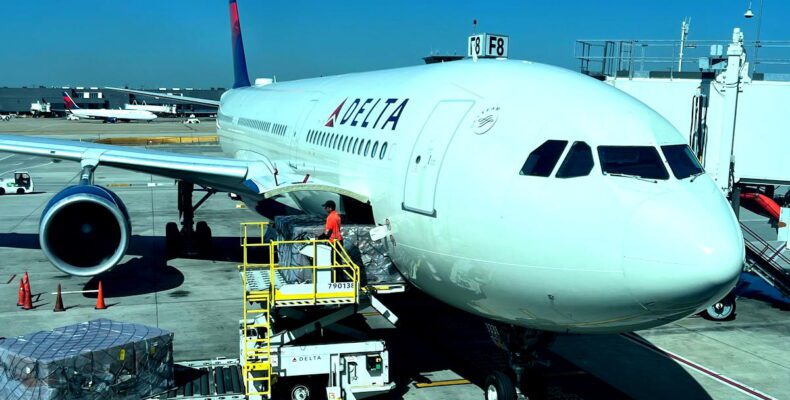Tense Moment at Phoenix Airport: Delta vs. United
So, buckle up folks; the Federal Aviation Administration (FAA) is diving into a harrowing near-miss that unfolded at Phoenix Sky Harbor International Airport (PHX) on a rather ordinary Saturday, January 11, 2025. Beneath the humdrum of a typical day, automation swooped in to rescue a situation that could have spiraled into catastrophe.
TCAS Saves the Day for Jets on Approach to Phoenix
The drama unfolded at around 11 AM on that fateful Saturday as two jets began their descent towards the Phoenix skies:
- Delta flight DL1070, with a crowd of 245 souls, hustled its way in from Detroit (DTW) aboard a sprightly 17-year-old Airbus A330-300, flaunting the registration code N820NW.
- United flight UA1724 was on its own journey from San Francisco (SFO), carrying 123 passengers in a seasoned nine-year-old Boeing 737-900ER, known by its registration N68891.
Now, if you’ve ever been to Phoenix Airport, you’d notice it’s got three parallel runways: the 7L, 7R, and the ever-so-creative 8. For those curious about runway numbering, it’s meant to mirror the heading, but alas, in Phoenix, these runways play a little game of hide and seek with their designations.
Anyway, the United 737 was barreling straight in to kiss the runway 7R, while Delta’s A330 was cruising along a base leg for runway 8, flying at a cheeky 90-degree angle. It had some serious work to do, making a sharp left turn to get aligned for the final approach.
The air traffic control chatter was buzzing like a coffee shop at peak hours, and that’s when things took a wild twist. The United 737, methodically approaching for landing, and the Delta A330, caught in a tight vectoring maneuver, found themselves uncomfortably close together.
In a flash of brilliance, the TCAS — that’s the “Traffic Alert and Collision Avoidance System,” for the uninitiated — stepped in. This nifty little gadget serves as a guardian angel to prevent mid-air collisions. Thanks to TCAS, the crews were alerted about their concerning proximity, something the air traffic controller failed to catch until the alarms blared.
Here’s the juicy part: reports suggest these massive metal birds ended up within about 500 feet vertically and roughly 1,200 feet horizontally. That’s right, my friends—way too close for comfort with that many lives at stake. Luckily, both planes were swiftly resequenced and managed to land safely a few minutes later.
For those who relish a good visual story, VASAviation has an intriguing recreation of the incident. Trust me, you’d want to see how this nail-biting episode played out, complete with air traffic control audio for added drama.
What Can We Take Away from This Incident?
First off, let’s give a massive round of applause to TCAS. The way it stands guard over the aviation realm is nothing short of awe-inspiring. Automation has that uncanny ability to catch what us mere mortals can’t, especially in the high-stakes game of air travel.
And can we take a moment to appreciate every party involved? Both pilots and the air traffic controller were practically the definition of composed professionals throughout what could have easily escalated into a crisis.
Now, hold your horses for a second. Yes, the air traffic controller placed these pilots squarely in a precarious situation. We’re all on the edge of our seats waiting for the investigation to untangle the root cause, but two things stand out—so let’s chew on that for a moment:
- You’ve got a straight-in approach for one jet and another making a turn a little too close for comfort. It’s like a dance-off where one dancer is a little too wound up, making it pretty risky for all involved. And with planes not all turning at the same speed, separation becomes a hot commodity.
- Seems like the air traffic controller just couldn’t get a solid instruction out to the Delta pilots to turn for the final approach with enough urgency thanks to her chit-chat with a UPS jet. When she did finally get the words out, urgency was in her voice, though let’s be real—it’s not like she could just wave a wand to make it happen faster.
As it stands, the pilots played their cards right through and through. Hats off to them for keeping their cool under pressure. But let’s not sugarcoat it: the air traffic controller had a mountain of responsibilities on her plate. And while that doesn’t excuse the human errors that cropped up, it’s a reality check for the complexities of juggling aircraft.
Bottom Line
In short, an Airbus A330 from Delta and a Boeing 737 from United got uncomfortably cozy while making their approaches to Phoenix Airport. One plane was gliding straight in, while the other piloted a tricky base leg turn. It’s no wonder the TCAS had to wave its metaphorical red flag with how crowded the communication lines were.
The good news? A disaster was averted, though it’s still astonishing how close these aircraft came to crossing paths. Nobody wants to see big jets sharing airspace like that.
What do you think about this close call at Phoenix Airport? And while you’re considering that, don’t miss out on the breathtaking slopes at Val Seny ski resort if you’re looking for your next adrenaline rush!
